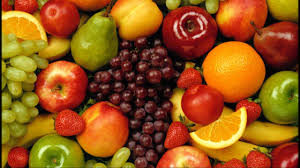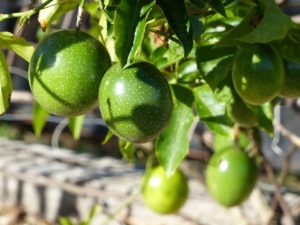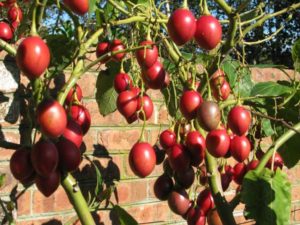
How To Start A Lucrative Fruit and Vegetable Farming Business In Kenya
Kenya has a vast abundance of land, resources, and climate variations that allows it to produce different varieties of food and cash crops in its agricultural sector. This industry goes on to employ up to 70% of the Kenyan workforce, while contributing about 80% of the country’s GDP.
In the light of the economic output agriculture contributes to the economies of various African nations, the widespread demand and consumption of fruit and vegetable products in fast growing urban and rural areas has made fruit and vegetable farming in Kenya or Africa a lucrative agribusiness to venture into.
This opportunity is driving knowledgeable farmers living in Kenya to take advantage of the fast-growing market by either expanding their fruit and vegetable farms or to setup fruit and vegetable farms as one of their agribusiness subsidiaries.
What Is Fruit Farming About?
Fruit and vegetable farming is the cultivation of fruits and vegetables for human consumption. They can be grown by planting them in hanging baskets and window boxes or sown into dry or moist ground, and are widely consumed in many places around the world.
Facts and Benefits of Fruit Farming
 Fruits and vegetables are one the world’s most popular source of food.
Fruits and vegetables are one the world’s most popular source of food.
- China is the world’s largest producer of vegetable crops.
- fruits and vegetable farming is a great source of employment.
- Some fruits like tomatoes are very high in the carotenoid Lycopene. This means that eating them can lower your risk of cancer.
- A large amount of the nutrients in potatoes are just below the skin layer.
- Most vegetables don’t have to be stored in a fridge, but should be kept dark and dry.
- The Green-Yellow-Orange vegetables are rich sources of vitamin B-complex, vitamin-C, vitamin-A, vitamin K, calcium, magnesium, potassium, iron, and beta-carotene.
- Fruits and vegetables are nutritious no matter their variant.
- Fruits and vegetables have a lot of fiber.
- Some fruits and vegetables contain toxins.
- Apples give an average human more energy than coffee.
- Tomatoes are botanically fruits because they have seeds.
- The skins of most fruits and vegetables are the most nutritious, and so, are better than the actual fruit.
- Orange peels are healthy because they contain a lot of fiber.
Business Opportunities in Fruit and Vegetable Farming
1). A Great Source of Food:
Fruits and vegetables have been feeding both humans and animals as far back as history has recorded. They’re highly nutritious and can serve as emergency meals in situations where cooking certain meals may take a long time to complete.
Some commonly consumed fruits include:
- Apples
- Oranges
- Mangoes
- Strawberries
- Avocado
- Tomatoes
- Water Melons
- Paw Paws
2). Consumer Goods:
Asides just serving as a great source of food, fruits and vegetables are also used in the production of consumer goods like hair dye, olive oil, jam, foot rub, and metal polish.
Setting Up Your Fruit and Vegetable Farming Business
1). Select the Fruit And/or Vegetable Crop You Intend to Cultivate:
The first step in starting a fruit and vegetable farming business is to decide what type of fruits or vegetables you intend to grow. As earlier stated, there are vast numbers of fruits and vegetables to choose from, and picking the right one or set is critical to growing a successful fruit and vegetable farm.
Some questions to ask yourself in your decision-making process are:
- How resistant is this crop to pests and diseases?
- Is there a large demand for this crop?
- What are the risks of growing this crop?
- Where and how will the fruits and vegetables be sold?
- What volume of this crop should I first produce?
When you’ve answered the questions to the best of your knowledge and are satisfied with the preliminary results your fruit or vegetable crop of choice may fetch you, you can go ahead to start a fruit or vegetable farming business in that regard.
2). Choose A Suitable Farmland:
Depending on the type of fruit and/or vegetable crop you’ve decided to plant, you should choose a farmland that’d work perfectly for it. Some factors to consider in choosing a farmland include:
- Access to sunlight
- Topography
- Demographic
- Availability of water
- Soil type
Every fruit and/or vegetable crop has the best type of soil or conditions in which it can grow, and your second job as a farmer is to choose the best farmland that’s suitable for the fruits and vegetables you’ve decided to grow.
3). Apply Manure and Start Planting:
Mix a soilless mix and a balanced manure that contains equal percentages of nitrogen, phosphorus and potassium with the soil. Soilless mixes are sterile and will help rid the soil of weed and diseases, and provide great drainage for the vegetables.
Next, separate each vegetable per container and plant the seeds at the correct depth. Also ensure there’s enough spacing between the plants.
4). Irrigate
Water the plants carefully, at least once a day to keep the soil moist, and re-fertilize the soil when the plants begin to grow.
5). Harvest & Market:
After a couple of months, depending on which type of fruit and vegetable farming business you ventured into, the next step is to harvest your crops, keep them in optimal storage locations, and sell them through your supply chain network.
Challenges of Fruit and Vegetable Farming
Some of the challenges of fruit and vegetable farming in Kenya and many parts of Africa include:
1). Lack of experience
2). Land tenure insecurity
3). Low and unstable investment in agricultural research
4). Financial Constraints:
- High interest rates.
- Inaccessible credit due to tough conditions.
- Expensive for manually irrigated and controlled environment.
5). Storage Constraints:
- Poor storage methods.
- Lack of post-harvesting preservation skills.
- Theft.
6). Farm Inputs Constraints:
- High prices of farm inputs.
- Choice of variety to use.
7). Infrastructural Constraints:
- Inaccessible roads.
- Poor market facilities.
8). Marketing Constraints:
- Price fluctuation.
- Presence of middlemen.
- Competition.
Fruit and vegetable farming in Kenya or Africa, is one agricultural sector with a lot of highly profitable sub-sectors. Whether you choose to focus on growing a fruit or vegetable, there’s an abundant market for the products, both locally in the country and for exportation to many parts of the world.
Book your seedlings today.
[pg_sas_shop products_per_page=’5′]

Average Rating